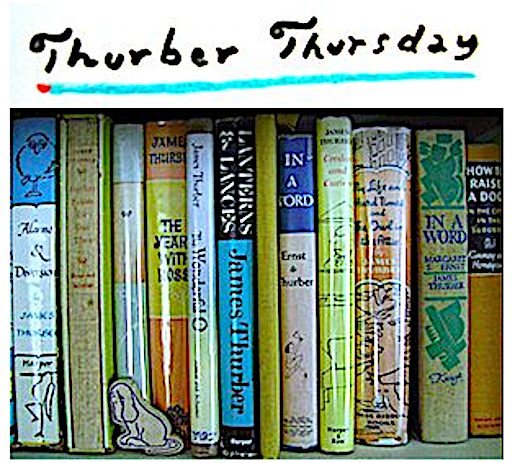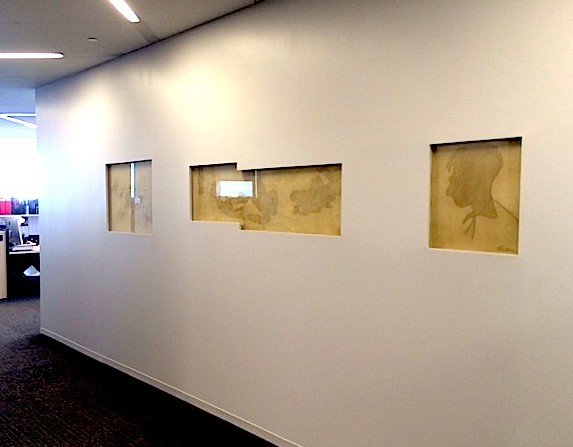An Anchor In A Hallway
On a recent visit to The New Yorker’s offices at One World Trade Center, my wife (and New Yorker colleague), Liza Donnelly, and I were a few minutes early for our appointment. So we plunked ourselves down in a small seating area at the end of a hallway on the 23rd floor, to kill a few moments. To my right, I saw a bright white luminescent wall featuring a blow-up of a Steinberg drawing. Steinberg’s work looks good all lit up (or even not all lit up). Directly across from us was a series of rectangular drawings (also somewhat luminescent)– perhaps they were contemporary spot drawings (my grasp of the magazine’s spot drawings has always been, well, spotty). But then, looking to my left, past the closed glass doors leading to another hallway, I spied some old friends: the Thurber drawings that have moved with the magazine ever since it left 25 West 43rd Street in 1991. I nudged Liza, directing her, with my gaze, to look in the direction of the drawings. “Ahhh,” she said — and smiled as she said it.
The first time we saw the drawings they were in their natural and original habitat at the magazine’s offices at 25 West 43rd Street. At that time they were in a small narrow office. Here’s how they looked then (photo by Liza).
When the magazine moved across the street, The New York Times noted their removal from the office wall and relocation (“There At The New Yorker, With Thurber,” February 19, 1991…I’d link to it, but it’s behind a paywall). In the new location they were inset and covered by glass (just as they are now at One World Trade).
As the Thurber drawings moved with the magazine, they became, for Liza and I, an anchor of sorts. No matter what physical space the magazine occupies; no matter how modern the offices, no matter where the offices are, as long as the Thurbers are there, it’s The New Yorker.
For those wanting dates/details, below is the Spill map showing all the addresses of the magazine, from 1924 through today (the Thurber drawings were not originally on the wall in location #1, but at location #2).
Further Reading: “Thurber’s Walls” by Ian Frazier, A Mile and A Half Of Lines: The Art of James Thurber, edited by Michael Rosen.




